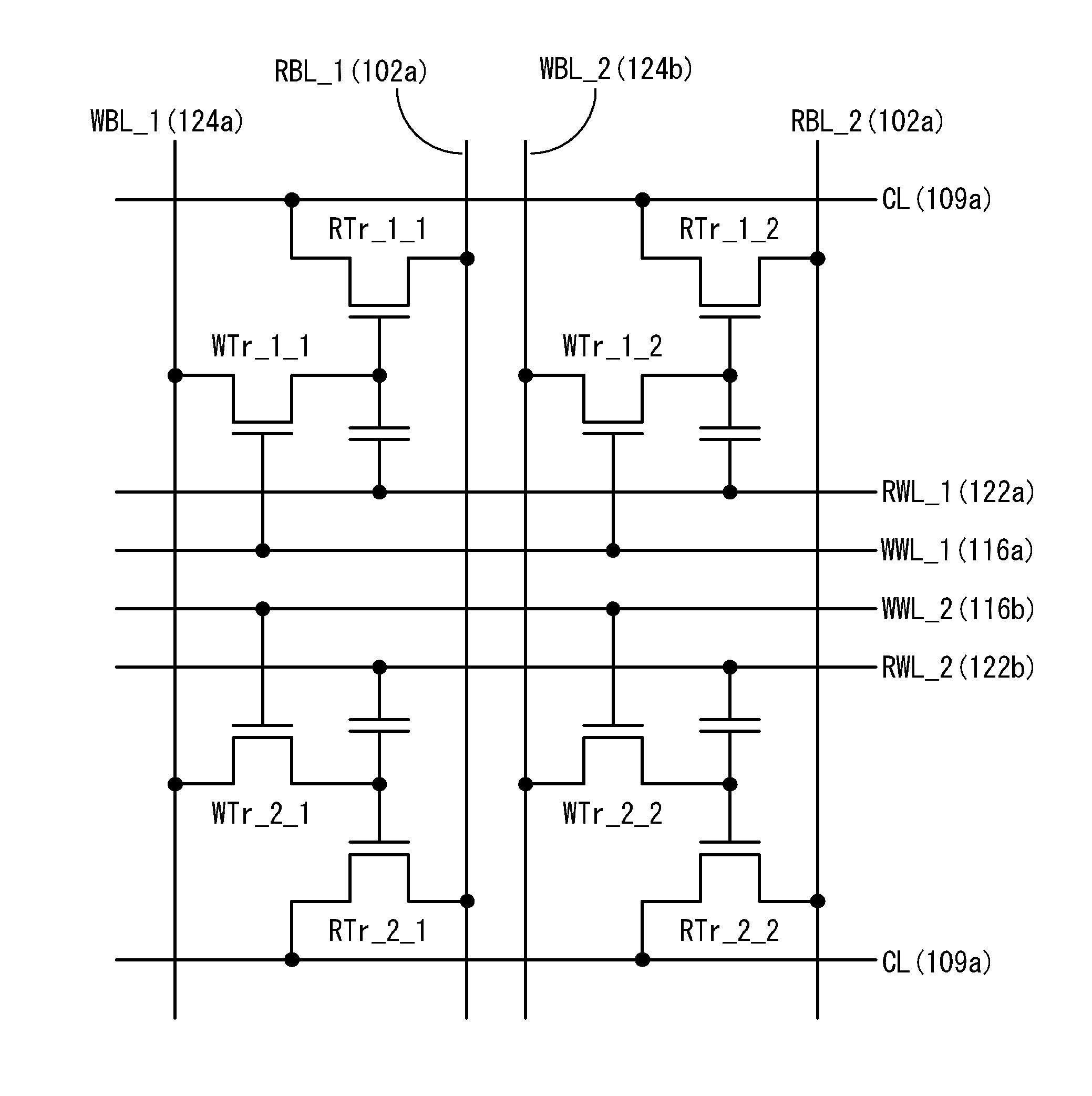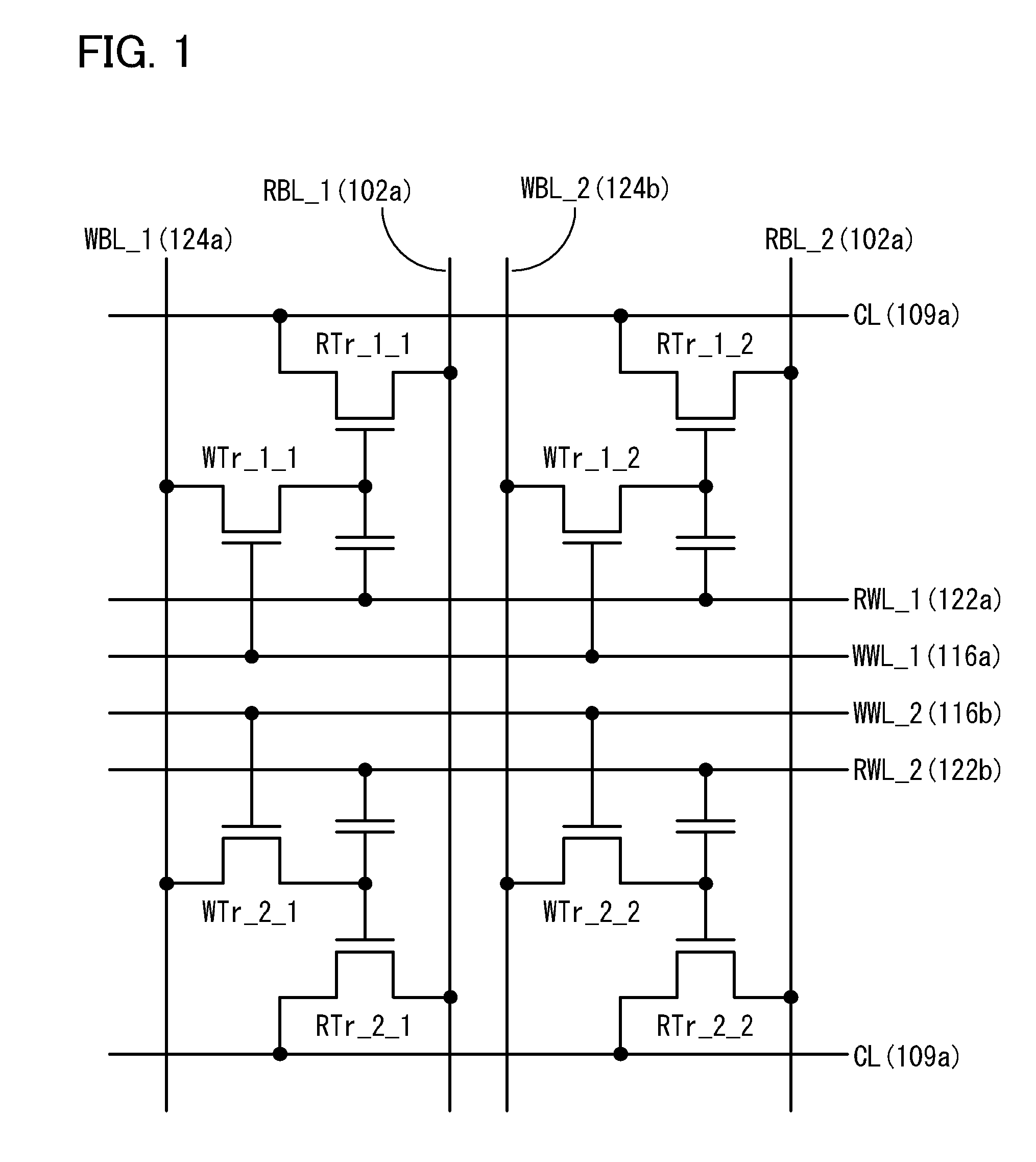Semiconductor memory device and method of manufacturing semiconductor memory device
a semiconductor memory and semiconductor technology, applied in semiconductor devices, digital storage, instruments, etc., can solve the problems of deterioration of the subthreshold characteristics of write transistors, insufficient consideration of an increase in the integration degree of gain cells, and difficult to achieve a cell area as small as 6 fsup>2 , etc., to reduce parasitic capacitance, reduce parasitic capacitance between the read bit line and such components, and reduce parasitic capacitance
- Summary
- Abstract
- Description
- Claims
- Application Information
AI Technical Summary
Benefits of technology
Problems solved by technology
Method used
Image
Examples
embodiment 1
[0058]A manufacturing process of a memory cell according this embodiment will be described with reference to FIGS. 2A to 2C, FIGS. 3A to 3D, FIGS. 4A to 4C, FIGS. 5A to 5C, FIGS. 6A to 6C, and FIGS. 7A to 7C. FIGS. 2A to 2C, FIGS. 6A to 6C, and FIGS. 7A to 7C each illustrate a cross section parallel to a bit line in the memory cell according to this embodiment. FIGS. 4A to 4C and FIGS. 5A to 5C are schematic views each illustrating a manufacturing step in the case where the memory cell according to this embodiment is seen from the above. Note that an insulating film or the like is not illustrated in FIGS. 4A to 4C and FIGS. 5A to 5C. Cross sections along dotted line A-B in FIGS. 4A to 4C and FIGS. 5A to 5C correspond to FIGS. 2A to 2C, FIGS. 6A to 6C, and FIGS. 7A to 7C.
[0059]In this embodiment, with a few exceptions, just the outline is described. Known techniques for forming a semiconductor integrated circuit or the like may be referred to for the details. FIGS. 2A to 2C, FIGS. 6A...
embodiment 2
[0117]This embodiment will be described with reference to FIG. 8. In this embodiment, a circuit (a driver circuit 202) for driving a memory cell, such as a sense amplifier or a decoder, is formed on a surface of a substrate 201 of a single crystal semiconductor by known techniques for forming a semiconductor integrated circuit. A read bit line 203 is formed over the driver circuit 202, and a memory cell layer 204 including a write word line and a read word line is provided over the read bit line 203. Further, a write bit line 205 is formed over the memory cell layer 204.
embodiment 3
[0118]A manufacturing process of a memory cell according this embodiment will be described with reference to FIGS. 9A to 9C and FIGS. 10A to 10C. FIGS. 9A to 9C and FIGS. 10A to 10C are cross-sectional views illustrating the manufacturing process of the memory cell according to this embodiment. In this embodiment, with a few exceptions, just the outline is described. Embodiment 1, known techniques for forming a semiconductor integrated circuit, or the like may be referred to for the details. FIGS. 9A to 9C and FIGS. 10A to 10C will be described below in this order.
9A>
[0119]A read bit line 302 is formed over a first insulator 301. Further, a second insulator 303 is formed over the read bit line 302 to have an appropriate thickness. The thickness of each of the first insulator 301 and the second insulator 303 is preferably 100 nm to 1 μm. In addition, the first insulator 301 and the second insulator 303 may each be formed using a material having a relatively low permittivity such as s...
PUM
 Login to View More
Login to View More Abstract
Description
Claims
Application Information
 Login to View More
Login to View More - R&D
- Intellectual Property
- Life Sciences
- Materials
- Tech Scout
- Unparalleled Data Quality
- Higher Quality Content
- 60% Fewer Hallucinations
Browse by: Latest US Patents, China's latest patents, Technical Efficacy Thesaurus, Application Domain, Technology Topic, Popular Technical Reports.
© 2025 PatSnap. All rights reserved.Legal|Privacy policy|Modern Slavery Act Transparency Statement|Sitemap|About US| Contact US: help@patsnap.com



